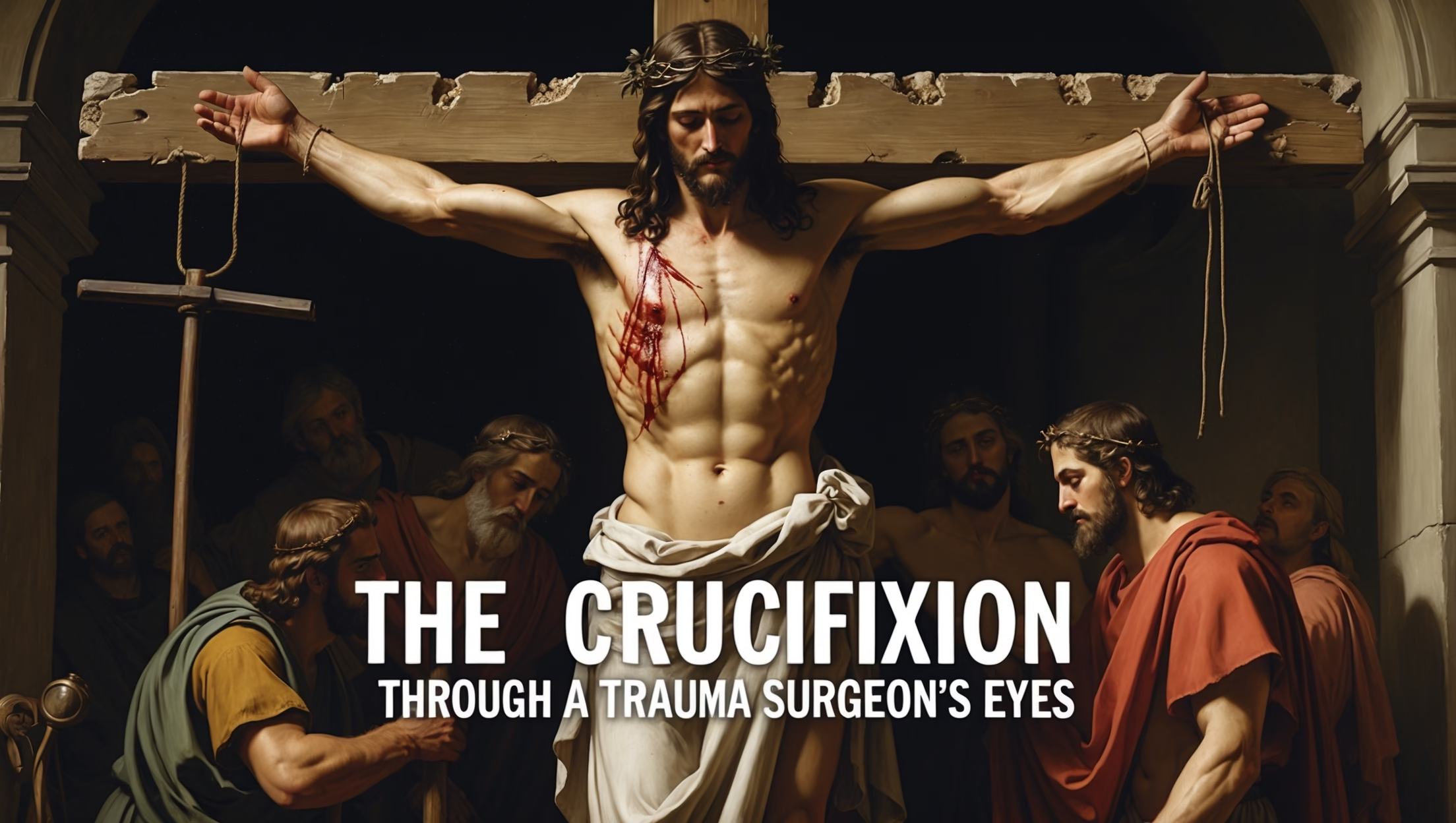What the Shroud of Turin Reveals About Roman Torture
For nearly two millennia, Christians have contemplated the agony of the crucifixion. But only in recent decades have advances in forensic medicine allowed us to study this ancient execution method with surgical precision. Trauma surgeons and medical examiners now apply modern science to the biblical narratives, comparing them with physical evidence such as the Shroud of Turin. Their findings not only validate the Gospels’ striking accuracy but also deepen our understanding of what Jesus endured on the cross.

A Trauma Surgeon’s Perspective
Dr. Joseph Bergeron, a physician at the Mayo Clinic, has been among the leading voices examining crucifixion from a medical standpoint. His research explores how Roman torture worked, why crucifixion was uniquely cruel, and what might explain Jesus’ unusually rapid death.
Whereas most victims lingered for two to three days before succumbing, the Gospels record that Jesus died in only a matter of hours (Mark 15:44 notes Pilate’s surprise at how quickly the death occurred). Understanding this anomaly requires both Roman history and modern trauma science.
Cause of Death: Asphyxiation or Heart Rupture?
The traditional explanation is asphyxiation. Crucified victims, with arms stretched and nailed, struggled to exhale. Each breath required pushing upward with pierced feet and pulling with lacerated arms, causing unbearable pain. Eventually, exhaustion set in and the victim could no longer breathe.
Yet Jesus’ case defies this. John 19:33 records that the Roman soldiers did not need to break His legs—a method called crurifragium, which hastened suffocation—because He was already dead.
Dr. Bergeron suggests an alternative: cardiac rupture caused by stress-induced cardiomyopathy. Today, doctors recognize conditions like Takotsubo syndrome, where extreme emotional and physical stress literally break the heart. Psalm 22:14’s haunting line—“My heart has turned to wax; it has melted within me”—resonates with this interpretation.
Scourging: A Prelude to the Cross
Before the crucifixion, Jesus endured Roman scourging with the flagrum, a whip with leather thongs tipped with lead balls or sharp bones.
- Medical analysis of the Shroud of Turin shows 120+ distinct scourge marks, consistent with two soldiers striking from different angles.
- The wounds tore flesh, bruised muscle, and caused significant blood loss even before crucifixion began.
- Historians note scourging alone could be fatal, but in Jesus’ case, it likely set the stage for profound shock and circulatory collapse.
Forensic 3D mapping of the Shroud’s injuries reveals symmetry, angles, and depth consistent with professional Roman executioners. This aligns with Gospel accounts that Jesus was flogged under Pilate’s orders (John 19:1).
Blood and Water: A Medical Mystery
Perhaps the most medically intriguing detail comes from John 19:34. When a Roman soldier pierced Jesus’ side, the evangelist reports that “blood and water” flowed out.
To ancient observers, this seemed miraculous or symbolic. But modern medicine offers two possible explanations:
- Pleural effusion – fluid collecting in the chest cavity, released when pierced.
- Pericardial effusion – fluid around the heart, consistent with rupture or severe trauma.
Either condition matches the trauma of scourging and crucifixion. Importantly, it reflects medical precision that a 1st-century fisherman like John could not have fabricated. Forensic experts regard this as one of the strongest arguments for the historical accuracy of the Gospel accounts.
Theological Resonance of Medical Details
Science may describe how Jesus died, but theology explains why. The convergence of medical findings with Scripture is striking:
- Psalm 22:14: “I am poured out like water” echoes the pericardial effusion.
- Isaiah 53:5: “By His wounds we are healed” corresponds with the scourge marks evident on the Shroud.
- John 19:30: Jesus declared, “It is finished,” moments before a sudden death consistent with catastrophic cardiac rupture.
The fusion of prophecy, eyewitness testimony, and forensic confirmation magnifies the significance of the crucifixion.
Roman Torture and Historical Accuracy
The Romans perfected crucifixion as state terror, designed not just to kill but to humiliate. Victims were stripped, displayed publicly, and left to die slowly in agony. Yet the forensic evidence from the Shroud of Turin, combined with biblical accounts, demonstrates a chilling accuracy:
- Nail placement: through wrists, not palms (confirmed by Shroud imaging, ensuring the body’s weight wouldn’t tear through).
- Crown of thorns: blood stains match scalp punctures across the head.
- Carrying the crossbeam: shoulder abrasions match injuries visible on the Shroud.
Such congruence has led many forensic scientists—Christian and non-Christian alike—to acknowledge that the Gospels preserve eyewitness details beyond legendary embellishment.
Why It Matters Today
Some dismiss the crucifixion as myth or exaggeration. Yet modern forensic science suggests the opposite: the Gospel writers captured clinical details centuries before medical science could explain them.
For Christians, this means the passion of Christ is not merely symbolic but anchored in verifiable reality. For skeptics, it demonstrates that the New Testament authors recorded history with precision, not invention.
More profoundly, examining the crucifixion through a trauma surgeon’s eyes underscores the depth of Jesus’ sacrifice. He endured the most brutal form of state-sanctioned torture, and He did so willingly. In a world still scarred by violence and injustice, this union of medical reality and theological meaning offers both credibility and hope.
Conclusion
The crucifixion of Jesus Christ remains the most studied execution in history. Through the lens of modern trauma surgery, the Shroud of Turin and the Gospels align with chilling clarity: scourging wounds, asphyxiation dynamics, cardiac rupture, and the “blood and water” phenomenon all point to a historically authentic and medically coherent death.
The convergence of Roman torture, forensic evidence, and biblical prophecy reveals a truth both scientific and spiritual: Jesus truly suffered, truly died, and did so in a way that science continues to confirm and theology continues to proclaim.










